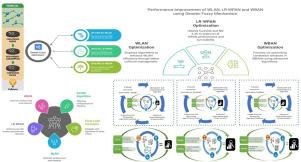Performance improvement of WLAN, LR-WPAN, WBAN using genetic fuzzy mechanism
IF 6.8
2区 工程技术
Q1 ENGINEERING, MULTIDISCIPLINARY
引用次数: 0
Abstract
IEEE standards play a crucial role in wireless technology due to their low cost, power, complexity, and high throughput. However, challenges such as collision avoidance and node energy consumption remain. Nodes communicate with coordinators on a first-come, first-served basis, which increases the chances of collisions and high energy consumption. Wireless technology advancements emphasize the need to overcome these obstacles. We developed a Genetic Fuzzy mechanism by combining Genetic Algorithms and Fuzzy Logic Controllers (FLC) to improve the performance of three IEEE standards: WLAN, LR-WPAN, and WBAN. The GA was used to optimize FLC configurations for enhanced system efficiency. Three approaches were proposed: GF-CWO for WLAN: This approach employs three algorithms to optimize the Binary Exponential Backoff (BEB) and Channel Status-based Sliding Contention Window (CS-SCW) mechanisms. GFCO for LR-WPAN: This method comprises five algorithms and uses Random Exponential Backoff (REB) and Survivability Aware Channel Allocation (SACA) algorithms integrated with fuzzylite in NS-3.20. Simulations showed GFCO outperformed SACA, boosting throughput, SR, PLR, and PD by 15.11%, 3.11%, 3.11%, and 5.52% in scenario-I, and by 12.06%, 9.0%, 9.0%, and 2.23% in scenario-II. GFuCWO for WBAN: This technique involves three algorithms to optimize the contention window using Alternate Binary Exponential Backoff (ABEB). Implemented in Castalia OMNeT++, it demonstrated improved results for the enhanced CSMA/CA method. The GFuCWO technique demonstrated superior performance in PDR, PLR, and E2D, with average enhancements of 4%–11% and 3%–13%, respectively. A comparative analysis of these methods highlighted their effectiveness in addressing network challenges and improving system performance.

利用遗传模糊机制改进WLAN、LR-WPAN、WBAN的性能
IEEE标准由于其低成本、低功耗、复杂和高吞吐量而在无线技术中发挥着至关重要的作用。然而,诸如避免碰撞和节点能耗等挑战仍然存在。节点以先到先得的方式与协调器通信,这增加了碰撞的机会和高能耗。无线技术的进步强调了克服这些障碍的必要性。我们通过结合遗传算法和模糊逻辑控制器(FLC)开发了一种遗传模糊机制,以提高三个IEEE标准:WLAN, LR-WPAN和WBAN的性能。利用遗传算法优化FLC配置,提高系统效率。提出了三种方法:用于WLAN的GF-CWO:该方法采用三种算法来优化二进制指数回退(BEB)和基于信道状态的滑动竞争窗口(CS-SCW)机制。LR-WPAN的GFCO:该方法包括五种算法,并使用随机指数回退(REB)和生存性感知信道分配(SACA)算法与NS-3.20中的fuzzylite集成。模拟结果表明,在场景1中,GFCO的吞吐量、SR、PLR和PD分别提高了15.11%、3.11%、3.11%和5.52%,在场景2中分别提高了12.06%、9.0%、9.0%和2.23%。用于WBAN的gfuwo:该技术涉及三种算法,使用备用二进制指数回退(ABEB)来优化争用窗口。该方法在Castalia omnet++中实现,证明了增强的CSMA/CA方法的改进结果。GFuCWO技术在PDR、PLR和E2D方面表现出优异的性能,平均分别提高4%-11%和3%-13%。对这些方法的比较分析突出了它们在解决网络挑战和提高系统性能方面的有效性。
本文章由计算机程序翻译,如有差异,请以英文原文为准。
求助全文
约1分钟内获得全文
求助全文
来源期刊

alexandria engineering journal
Engineering-General Engineering
CiteScore
11.20
自引率
4.40%
发文量
1015
审稿时长
43 days
期刊介绍:
Alexandria Engineering Journal is an international journal devoted to publishing high quality papers in the field of engineering and applied science. Alexandria Engineering Journal is cited in the Engineering Information Services (EIS) and the Chemical Abstracts (CA). The papers published in Alexandria Engineering Journal are grouped into five sections, according to the following classification:
• Mechanical, Production, Marine and Textile Engineering
• Electrical Engineering, Computer Science and Nuclear Engineering
• Civil and Architecture Engineering
• Chemical Engineering and Applied Sciences
• Environmental Engineering
 求助内容:
求助内容: 应助结果提醒方式:
应助结果提醒方式:


